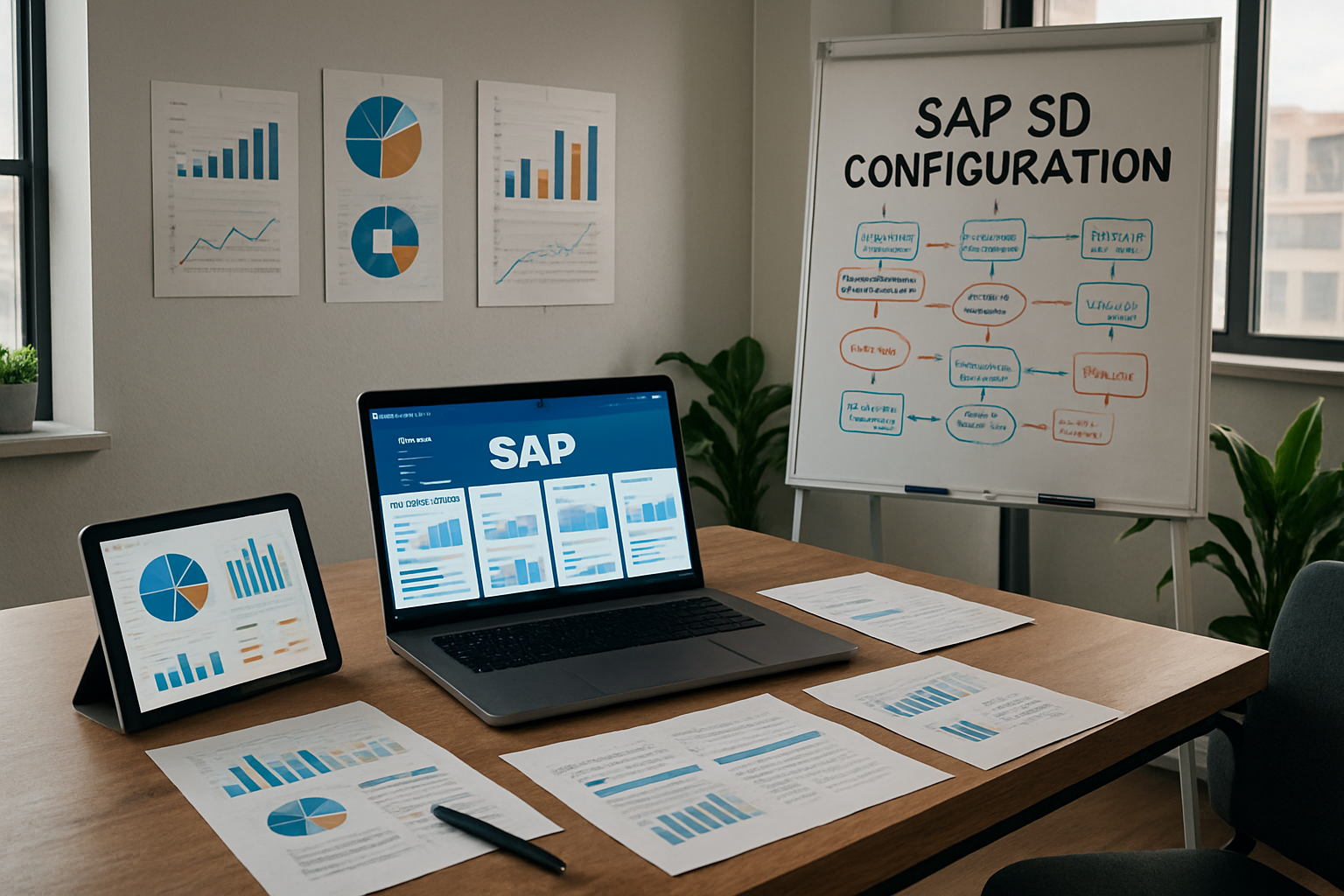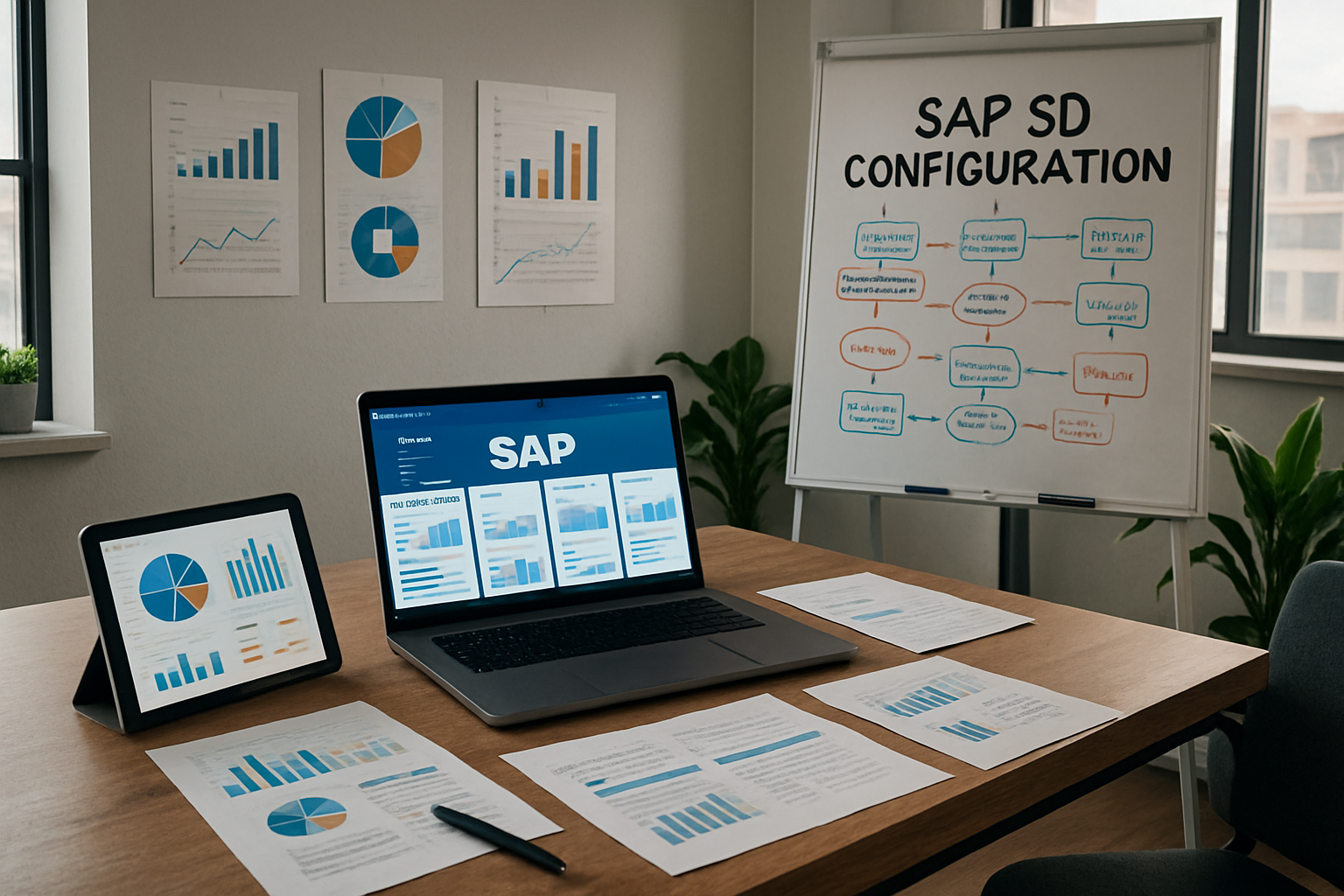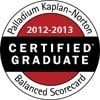Getting your SAP SD configuration right is the foundation of a solid Order-to-Cash process. Without it, even the best sales strategy will struggle with system errors. This is not just about technical settings; it is about making your SAP system support how you do business.

In more than two decades managing SAP implementations across Aerospace, Logistics, and Retail, I have found SAP SD configuration is where business and technology truly intersect. Getting this alignment correct from the start prevents countless headaches down the road. Success depends on understanding both the technical setup and your business processes.
If you feel overwhelmed by the setup process, do not worry, you are not alone. Many businesses struggle to align the system with their real-world needs. We can give you expert help implementing the SAP SD module and making sure your project starts on solid ground.
Why Proper Configuration Determines Project Success
A solid setup is more than just a technical checklist. It is the engine that drives your entire sales cycle within the SAP enterprise resource planning system. When the sd module runs smoothly, everything else falls into place.
The Role of SD in Order-to-Cash
SAP Sales and Distribution (SD) connects your sales activities directly to your logistics and financial reporting. The sap sd module manages the entire process from a customer's first inquiry to the final payment. This flow includes creating sales orders, scheduling deliveries, shipping goods, and sending out invoices.
Even a small mistake in the SAP SD configuration can create big problems. For instance, an incorrect setting can affect your finance team's reports, your warehouse's shipping schedule, and even your production planning. It is all connected within this single enterprise resource.
The Cost of Getting It Wrong
Cutting corners during the setup phase always costs more in the long run. I have seen this happen on many projects. Common issues include revenue posting to the wrong general ledger accounts, which creates a nightmare for accounting.
Other problems like failed deliveries due to incorrect shipping point determination can damage customer relationships. We have also seen duplicate customer records pop up because of poorly defined account groups. As my colleague Lonnie Ayers, a PMP with years of experience, often says, "Most post-go-live issues originate in configuration shortcuts during blueprinting."
Understanding SAP SD Organizational Structure
Before you touch any settings, you have to understand the organizational structure. This is the framework that represents your company's business structure inside SAP. Getting this hierarchy right is the first step in any successful SAP SD configuration project.
Key Organizational Elements Explained
The system uses several key elements to map out your business, forming the enterprise structure. Each one has a specific job and they all link together in a logical chain. It starts broad and gets more specific.
- Sales Organization: This represents a selling unit. It is responsible for distributing goods and services and also carries the legal responsibility for sd sales.
- Distribution Channel: This is how you get a software product to your customers. Examples include wholesale, retail, or direct sales via the internet.
- Division: You use this to group materials or services. For example, a company might have divisions for electronics and appliances.
- Sales Area: This is the combination of a Sales Organization, a Distribution Channel, and a Division. All sales documents are assigned to a specific sales area.
- Plant: This is a location where goods are produced or stored. It is critical for inventory management and delivery processing.
Example Use Case
Think about a large manufacturing company. It might sell its products directly to large retailers (wholesale) and also to individual consumers through an online store (retail). Each of these represents a different distribution channel.
This company would need an SAP sales area setup to handle this. The wholesale channel might have different pricing, delivery terms, and payment conditions than the retail channel. By defining separate sales areas and potentially a common distribution channel for shared services, you can manage these different business processes within the same SAP system.
SPRO Configuration Path Overview
All the magic happens in the SAP Project Reference Object, or SPRO. This is the transaction code where consultants and administrators customize the system. You will be spending a lot of time here during your project.
Where to Configure SAP SD
To start your configuration guide journey, you need to go to the SPRO transaction. From there, you follow a path through the Implementation Guide (IMG) menu. The main area for organizational structure is under Enterprise Structure.
The primary path is: SPRO → Enterprise Structure → Definition → Sales and Distribution. From there, you can define each of the organizational elements we discussed earlier, like sales organizations and shipping points.
| SPRO Menu Path | Purpose |
|---|---|
| Enterprise Structure → Definition → Sales and Distribution | Define Sales Org, Distribution Channel, Division |
| Enterprise Structure → Assignment → Sales and Distribution | Assign Sales Org to Company Code, and so on |
| Sales and Distribution → Master Data | Configure Customer and Material Master Data |
| Sales and Distribution → Basic Functions | Set up Pricing, Account Assignment, and more |
Define and Assign Relationships
Defining the elements is just the first half. The second, more important part is assigning them to each other. This creates the hierarchical links that the configuration sap needs to function correctly.
You will need to define a sales organization and then complete the assigning sales organization to a company code step. You will define your distribution channels and divisions; steps like assign distribution channel- plant and assign division are next. Then, you set up your sales areas by combining all three.
Finally, you assign plants to the correct sales areas. On large global projects, creating a standardized SPRO sd configuration template helps avoid misalignment across different company codes. This consistency is very important for accurate reporting and smooth operations, and a great starting point can often be found on the SAP Community forums where a registered user can share knowledge.
Configuring Customer Master Data
Your customers are at the center of the sales process. Their distribution master data must be accurate and well organized. The SAP SD configuration for customer master controls how customer information is created, stored, and used.
Defining Account Groups and Number Ranges
Account Groups are used to classify customers. For example, you might have different groups for a Sold-to Party, a Ship-to Party, a Bill-to Party, and a Payer. Each group controls which fields are available and required when creating new distribution master records.
You find this setting at: SPRO → Sales and Distribution → Master Data → Business Partners → Customers → Define Account Groups. After defining the groups, you must create number ranges and assign them. This determines if a customer number is assigned internally by the system or externally by the user.
Partner Functions
Partner Functions identify the roles each business partner plays in a transaction. The system uses these functions to determine who receives the goods, who gets the invoice, and who pays the bill. Getting this partner determination right is critical.
Documenting every possible combination of partner functions is a good practice. In Retail, for example, incorrect partner setup often leads to invoice delivery failures because the bill was sent to the shipping address instead of the billing address. For more on this, check out our guide to managing SAP Master Data.
Configuring Material Master Data
Just like customer data, your material data needs a proper structure. The material master contains all the information about your products. SD configuration dictates how this data is used in sales documents and defines the product function.
Key Views in the Material Master
The material master is organized into different views, and several are specific to sales. The key ones are Sales Org 1, Sales Org 2, and Sales General and Plant. These views hold information about the delivering plant, tax classifications, and item category groups.
This data is directly linked to other processes like the availability check and sd pricing. If a material is not extended to the correct sales area, you simply cannot sell it there. The SAP Help Portal has detailed documentation on every field.
Material Master Customization
You will need to define material types (like finished goods or raw materials) and item category groups. These settings influence how a material behaves during sales order processing. For instance, the item category group helps the system determine the item category in a sales order.
This in turn affects things like whether the item is relevant for delivery and billing. For example, a standard inventory item behaves very differently from a service item or a text item. Proper setup here affects the entire sales distribution flow.
Pricing Configuration in SAP SD
Pricing in SAP is powerful but can seem complicated at first. It uses a concept called the condition technique. This method allows for a very flexible and automatic way to determine prices.
Overview of the Condition Technique
The condition technique works like a search. It uses a predefined procedure to look for valid prices, discounts, and surcharges. The search moves from most specific to most general combinations.
- Condition Tables: These define the key combination for a record, like Customer and Material. You create condition table entries to store your pricing condition data.
- Access Sequences: This is the search strategy that tells the system which condition table to check and in what order. A correct assign access sequence step is crucial for the logic to work.
- Condition Types: These represent a pricing element, such as a base price, a discount, or a tax. They are the building blocks of any pricing calculation.
- Pricing Procedure: This is the complete set of condition types, arranged in a specific calculation order. This is where you configure pricing logic.
You will find these settings at: SPRO → Sales and Distribution → Basic Functions → Pricing → Pricing Control. This is the central hub to configure pricing procedure details. After you define all components, you must assign condition table structures to your access sequences and assign access sequences to your condition types.
Assign Pricing Procedure
Once you build your pricing procedure, you have to tell SAP when to use it. The system determines the correct procedure based on a combination of three elements. These are the Sales Area, the Document Pricing Procedure from the sales document type, and the Customer Pricing Procedure from the customer master record.
This determination links the transactional data with your pricing configuration. Proper setup means the system automatically finds the correct condition records for every sales order item. You can learn more about Advanced Pricing techniques in our separate guide.
Sales Document Configuration
Sales documents are the heart of the SD module. These are your sales orders, contracts, and quotations. Your configuration here will define how these documents behave.
Defining Sales Document Types
Each sales process needs a corresponding sales document type. Examples include 'OR' for a standard order, 'RE' for a return, and 'CR' for a credit memo. When you define a sales document type, you set key controls.
These controls include the number range for the document, how item categories are determined, and which billing documents can be created from it. This setup gives you great control over each business transaction. A good source for examples is TutorialsPoint on this topic.
Delivery and Billing Documents
The process flows from a sales order to a delivery, and then to a billing document. This is controlled by settings known as copy control. Copy control manages how data is transferred from one document to the next.
For example, copy control rules determine which data from the sales order gets copied into the delivery document. It also controls how the system creates an accounting document when you post a specific billing type. Proper copy control makes the document flow seamless and accurate.
SD Integration with MM and FICO
SAP SD does not operate in a vacuum. It is tightly integrated with the Materials Management (MM) and Finance and Controlling (FICO) modules. Your SAP SD configuration plays a huge role in how these modules work together.
SD–MM Integration
The connection between SD and MM is most visible during delivery processing. To get started, you must define shipping points in the enterprise structure. Then you assign shipping point to the relevant plants.
When you create a delivery, the system checks material availability using these settings. This check is an integration point with MM's inventory management. When goods are shipped from defined shipping points, a goods movement is posted, which is another MM function. For a standard delivery, this is typically goods movement type 601.
SD–FICO Integration
Every time you create a billing document, SAP automatically creates a corresponding accounting document in FICO. The system needs to know which G/L accounts to post the revenue, taxes, and receivables to. This process is called account determination.
You can configure this at: SPRO → Sales and Distribution → Basic Functions → Account Assignment/Costing. The system can use different factors like the customer group, product division, and sales area to find the correct revenue accounts. Getting this right is critical for accurate financial reporting.
Testing, Validation, and Transports
Configuration is not complete until it has been thoroughly tested. A structured testing process is crucial to catch errors before they affect your live business operations. You must also have a solid process for moving your changes through the system landscape.
Testing Stages
Testing should happen in multiple stages. It starts with Unit Testing, where you test individual pieces of configuration. Then you move to Integration Testing, where you test entire end-to-end business processes.
Finally, User Acceptance Testing (UAT) is where business users confirm the system meets their requirements. Having standardized test scripts for each stage makes the process repeatable and thorough. These scripts should cover all your key business scenarios.
Transports and Version Control
Changes in SAP are moved from the development system to the quality and production systems using transports. Strong governance over this process is vital. Every transport request must be traceable to a design document or a change request.
This discipline here prevents costly regressions and keeps the production system stable. Losing track of changes is a common cause of post-go-live problems.
Best Practices for a Smooth Implementation
Following some simple best practices can make your implementation much smoother. These are lessons learned from countless projects. They are less about technical settings and more about process and people.
Configuration Documentation
Always document your configuration. Start with a detailed blueprint document during the design phase. Use clear naming conventions for all your custom objects.
This documentation, ideally kept in a printer friendly format, is priceless for future support and for onboarding new team members. It explains the "why" behind your settings.
Cross-Functional Workshops
SD, MM, and FI teams must work together from the very beginning. You need to define common distribution channels and define common division structures that work for everyone. Hold workshops during the design phase to confirm everyone is aligned on the configuration sap logic.
This helps avoid integration gaps that are difficult to fix later. Key decisions like how to define sales areas or assign shipping points should involve all stakeholders.
Change Management
Never underestimate the human side of an SAP project. A new system means new processes for your users. A strong change management plan is essential.
Successful go-lives hinge as much on user training and change readiness as on configuration accuracy. Prepare your users for the change and get their buy-in early. Also, consider the user interface, where settings like cookie preferences can impact adoption of web-based tools.
Conclusion
The SAP SD configuration forms the foundation of your entire Order-to-Cash process. Taking the time to do a proper setup pays off with stable system integration and high-quality data. It is the key to making your sales operations run efficiently and without errors.
A well-configured system lets you focus on growing your business, not on fixing technical problems. From assigning sales organizations to configuring a complex pricing procedure, each step builds on the last. This careful setup of the enterprise resource planning software product will serve your business well for years.
If you need support with your SAP SD configuration, we are here to help. Get expert help implementing SAP SD and start your project with confidence. You can also book a meeting with our program management expert, Lonnie Ayers, PMP.
Need Expert SAP Consulting Expertise?
We are team of top-level SAP consultants, focused on helping you get the most value from your SAP investment. Whether you need a single SAP SD consultant or an entire team of SAP experts, we can provide them. Please our book a meeting service to get started.




